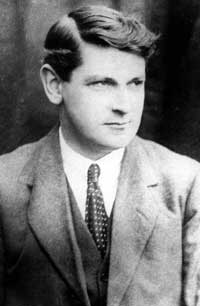29 September 2005 Edition
Book review: The Squad and the Intelligence Operations of Michael Collins

'The Squad' headed by Michael Collins
REVIEWS
The Squad is reviewed by Matt Treacy
Gripping read
Book Review: The Squad and the Intelligence Operations of Michael Collins
T Ryle Dwyer, Mercier Press, Price €12.95
Parts of this book read like a fictional thriller. IRA men and British agents stalking one another on the streets of Dublin, with the occasional brief encounter in strange places like 'Kidds Back' off Wicklow Street and the Cairo Café in Grafton Street.
It was a war of subterfuge and stealth. British agents, for the most part Irishmen, attempted to identify and track down members of IRA GHQ, the Dublin Brigade and Volunteers like Seán Treacy and Dan Breen who had come to the city. In response the IRA set up what became known as 'The Squad', formally established at a meeting in 46 Parnell Square on 19 September 1919.
Officially the unit remained a part of the Dublin Brigade under Dick McKee from Finglas, but they were separate from the Battalion structure and directly under the command of Collins, McKee and Mulcahy. It was an effective arrangement. One that made it, by and large, secure from enemy infiltration and surveillance and thereby more effective.
Dependent on a vast network of sympathisers who ranged from Dublin Castle detectives to women working in lodging houses, the Squad was able to identify enemy agents and assassinate them. No less than any other killings the details of these, as recounted in Ryle Dwyer's book, are gruesome.
The author must be congratulated on his use of the accounts of participants that starkly convey the manner in which enemies of the Republic were dispatched. Particularly gripping are the accounts of 21 November or Bloody Sunday, when the Dublin IRA, with the Squad at the forefront, went out to execute 35 British operatives. Around 50 were shot and 12 killed. But while not completely successful it dealt a massive blow to the British system of terror and espionage.
Ryle Dwyer also cites statistics which prove that far from being a spent force by the time of the Truce, the IRA was inflicting increasingly higher numbers of casualties. In the second half of 1920 174 Crown personnel were killed and 310 wounded. In the first six months of 1921 the corresponding figures were 317 and 638.
The book, as previously referred to, is mainly based on statements made by republican activists to the Bureau of Military History in the 1950s. These are now available to researchers in the National Archives in Dublin and can provide material for further original research on the period. Ryle Dwyer, meanwhile, must be commended for writing a gripping and valuable book.
BY MATT TREACY


